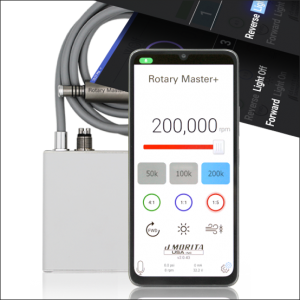
Management of acute pain in childhood
Lara Figini
The management of intense pain in childhood is often difficult and causes concern both for the parents of the young patient and clinician.
At the pharmacological level, there are two types of drugs commonly administered: non-steroidal anti-inflammatory drugs (NSAIDs) and paracetamol. NSAIDs possess anti-inflammatory, analgesic, antipyretic and antiplatelet properties. The main categories of NSAIDs are salicylic acids (aspirin), propionic acids (ibuprofen, naproxen) and selective inhibitors of cyclo-oxygenase-2 (celecoxib).
Adverse events associated with NSAID absorption include an increased incidence of cardiovascular events, increased platelet function, decreased renal blood flow and gastritis with pain and bleeding.
Acetaminophen is a pain reliever often prescribed for mild to moderate pain and is primarily an antipyretic. To date, there are no clinical practice guidelines that provide recommendations to assist patients and dentists in determining the most appropriate pharmacological strategies for the management of acute dental pain.
Materials and methods
In a systematic review published in the Journal of the American Dental Association in May 2023, the authors evaluated the clinical efficacy of analgesics for the management of acute pain after tooth extractions and pain associated with irreversible pulpitis in children.
Researchers conducted a literature search through Medline, Embase, the Cochrane Central Register of Controlled Trials, and the U.S. Clinical Trials Registry through November 2020. They included randomized controlled trials comparing all pharmacological interventions with a placebo in pediatric participants undergoing tooth extractions or with intense pain due to irreversible pulpitis.
After screening and data extraction, the authors conducted a random effects meta-analysis. They assessed the risk of bias using the Cochrane Risk of Bias 2.0 tool and the certainty of the evidence using the Grading of Recommendations Assessment, Development and Development Evaluation approach.
Results
The authors included six randomized controlled trials reporting eight comparisons. The review data showed that ibuprofen may reduce pain intensity more than acetaminophen (mean difference [MD], 0.27 points; 95% CI, 0.13 to 0.68; low certainty) and a placebo (MD, 0.19 points; 95% CI, 0.58 to 0.21; low certainty).
Acetaminophen may reduce pain intensity compared with placebo (MD, 0.13 points; 95% CI, 0.52 to 0.26; low certainty). Acetaminophen and ibuprofen combined reduce pain intensity compared with acetaminophen alone (MD, 0.75 points; 95% CI, 1.22 to 0.27; moderate certainty) and ibuprofen alone (MD, 0.01 point; 95% CI, 0.53 to 0.51; moderate certainty).
There has been little research regarding the adverse effects of these drugs.
Conclusions
From the data of this study, it can be concluded that there are no studies addressing the effects of analgesics for pain management in irreversible pulpitis in children.
Regarding the effects of analgesics for the treatment of pain after tooth extractions, ibuprofen can reduce pain intensity compared to a placebo and paracetamol.
The combination of paracetamol and ibuprofen reduces pain intensity compared to paracetamol alone and ibuprofen alone.
For more information: "Analgesics for the management of acute dental pain in the pediatric population. A systematic review and meta-analysis."
 Tag
Tag
 Related articles
Related articles
Oral surgery 17 January 2025
Minor oral surgery or dental extractions (oral or dental procedures) are widely performed and can be complicated by hazardous oral bleeding, especially in people with an inherited bleeding disorder...
Oral surgery 18 December 2023
Dental extraction, simple or complex, is a common procedure in oral and maxillofacial clinical practice and is characterized by various possible complications, both peri- and post-operative.
Endodontics 03 September 2023
The goal of this study was to compare the levels of the human nucleotide-binding domain, leucine-rich repeat, and pyrin domain-containing-3 protein in the saliva and gingival crevicular fluid of...
Endodontics 25 May 2023
Pulpotomy versus root canal therapy in mature teeth with irreversible pulpitis
Vital pulp therapy is increasingly practiced as an alternative treatment to root canal therapy in teeth with carious pulp exposure. The aim of this study was to compare the outcome, quality of life...
Orthodontics 12 November 2025
Effectiveness of dental monitoring system in orthodontics: A systematic review
Dental monitoring (DM) constitutes a recent technological advance for the remote monitoring of patients undergoing an orthodontic therapy.
 Read more
Read more
Oral pathology 25 November 2025
Virtual microscopy (VM) is a technology for showing microscope slides using computers and could be considered a progression of classic methodology using optical microscopes.
For every assist this season, the insurance provider will donate $25 to TUSDM Cares for Veterans
Products 25 November 2025
J. MORITA USA, a world leader in handpiece technology, has announced the Rotary Master+ Electric Motor. Compatible with Morita TorqTech electric attachments and most competing electric handpieces on...
News 25 November 2025
Let’s be honest: nothing kills the vibe quite like bad breath. However, while 85% of people prefer for someone to tell them if their breath needs some freshening up, only 15% are willing to break...
News 25 November 2025
Vitana Pediatric & Orthodontic Partners (Vitana), a dentist-led dental partnership organization (DPO) focused exclusively on elite pediatric dental and orthodontic practices with operations in...














